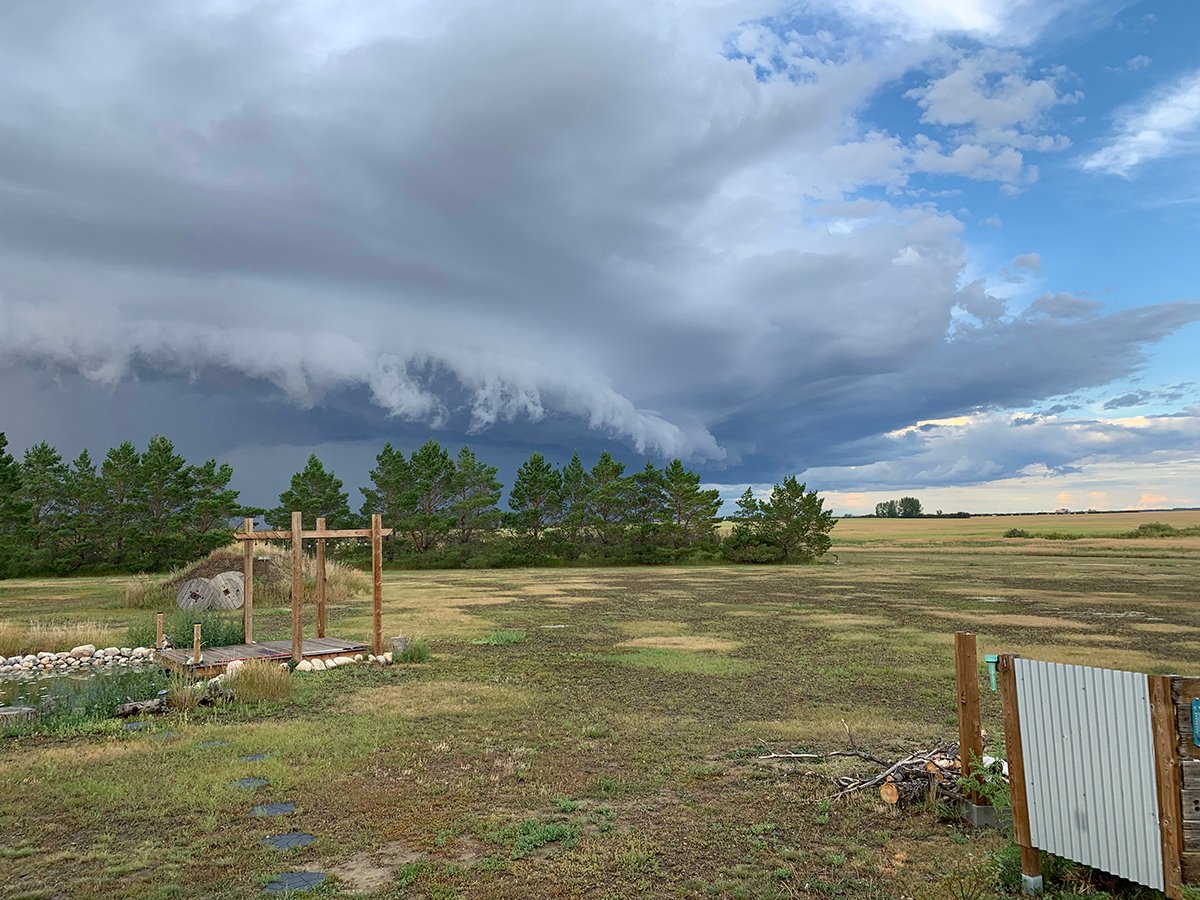WINNIPEG – Two University of Manitoba researchers are trying to use bacteria to control sclerotinia in canola.
Teri de Kievit, an associate professor in microbiology, and Dilantha Fernando, a plant pathology professor, are researching pseudomonas, a naturally occurring bacterium found on plants and in soil around the globe.
“It was a very good match because I had the agriculture background and Teri had more of the molecular (expertise),” Fernando said.
They are particularly interested in a strain of pseudomonas that Fernando and his colleagues discovered in Manitoba a decade ago.
Read Also

Storm dynamics and extreme rainfall
Besides moisture, instability and orographic lift, the next biggest factor that contributes to heavy or extreme rainfall is storm dynamics.
The strain, which lives on canola plants and in the soil around the plants, produces antibiotics that destroy harmful fungi such as sclerotinia.
The researchers discovered in greenhouse experiments that the fungal disease was almost non-existent when canola plants were treated with the bacteria and then exposed to sclerotinia.
“The way in which they are beneficial is that they produce antibiotics and enzymes that degrade fungal cell walls, or are an inhibitor of the growth of the fungus,” de Kievit said.
“Just like a vaccine in humans, the presence of the bacteria itself stimulates the plant’s immune response…. So if I had to sell it, there are a lot of advantages (compared to) a conventional fungicide.”
Selling this type of biotechnology to farmers remains a long way off.
Fernando and de Kievit first want to fully understand how, why and under what conditions the bacteria functions before they get too excited about commercialization.
For now, de Kievit is studying the bacteria in the lab and in greenhouses at the U of M. Her research team has studied thousands of mutant variations of Fernando’s pseudomonas strain.
“We screened them all and looked for ones that showed either increased or decreased antifungal activity compared to the wild type (of bacteria),” she said.
They first identified mutants that had a greater or lesser ability to control sclerotinia and then looked for the altered gene in the bacteria that was associated with increased or decreased antibiotic production.
“The real understanding comes through those mutants,” Fernando added, because it will help scientists comprehend the molecular mechanisms behind the biological control.
One of their key findings was that the bacteria produces an antibiotic called pyrrolnitrin, which is the key biocontrol in the fight against sclerotinia on canola.
Perhaps more importantly, they discovered a regulator on the bacteria’s genetic code that turns the production of antibiotics on or off.
De Kievit and Fernando also want to know if the bacteria produce antibiotics under difficult environmental conditions.
“We do look, for instance, at persistence,” de Kievit said.
“How well the mutant (bacteria) survive on the canola petals compared to the wild type in the greenhouse. Maybe they produce more antibiotics (but) do they still tolerate UV light, drying, air blowing around?”
Fernando is focusing on the performance of the wild bacteria in fields in Manitoba, which likely also exists throughout the northern plains of the United States and the Canadian Prairies.
Fernando and his team are looking at how the biocontrol performs under different agronomic conditions, such as no-till versus till and conventional versus organic farming.
He’s also looking at how a particular crop affects the microbial populations.
For example, wheat may have synergies with a certain type of bacteria, while canola may foster the growth of another beneficial bacteria.
Both researchers believe it will take awhile to develop the commercial potential of the beneficial bacteria because they want to learn as much as possible before they move to that stage.
As well, industry isn’t ready to embrace this kind of approach to disease control.
“The unfortunate thing about some of these sustainable systems is that the big companies … aren’t all that interested because, for them, they’re still doing very well with the fungicides,” Fernando said.
He said one possibility is to use the bacteria in combination with a fungicide, but a shift in thinking is needed before that happens.
“We are looking at integration and a technology that can bring about a future that is very different from today,” Fernando said.
“Biological systems are working (in nature) right now. Unfortunately we don’t recognize them because when we see a clean field … we don’t give credit to the biological system, so we may be missing the point.”















